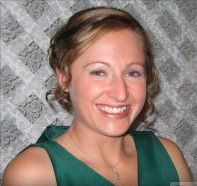The Secret Recipe for Writing a Perfect Pitch

All the right ingredients can make magic…
Today, I am preparing to teach this weekend at the DFW Writers Workshop Conference, so I asked Marcy to guest post on an important topic. Conference season is upon us. Many of you will be talking to agents and editors soon. Or, you might be wracking your brain trying to nail down the hook for a query letter. Marcy is a master at teaching how to refine those tens of thousands of words into something coherent and interesting….
Take it away, Marcy!
***
Writing a book is easy…at least when compared to what we need to do after we finish. We had 50,000 to 100,000 words to write our novel, and now we have to condense that down into a couple of paragraphs for an agent pitch, query letter, Amazon description, or back cover copy.
It feels unfair. Mean really. After all, if we’d wanted to write something short, we would have written a short story.
But it’s not as scary as you might think if you break it down into a formula. If formula sounds too scientific, then think of it as baking cookies and this is your secret recipe to cookies a pitch that will make anyone’s mouth water.
Hook + Character Introduction + First Plot Point + (Optional) Closing Sentence
Start with a hook.
There are a few ways to do this.
You could start with your tagline or with a couple of catchy sentences written specifically for the description.
It wasn’t that she wanted to live forever. She just didn’t want to die – from the description of Stealing Time by Elisa Paige.
I call these the “ooo” openings because the whole point is to make you go “ooo” and keep reading.
You could also just jump right in with a really interesting fact about your main character or about the setting.
Most everyone thinks Ward of Hurog is a simple-minded fool—and that’s just fine by him – from Dragon Bones by Patricia Briggs
It tells you a lot about a character when they don’t mind letting people think they’re stupid. You immediately want to know if he’s really a simple-minded fool. And if he’s not, why doesn’t he mind being thought of as stupid? In other words, curiosity drives you to read the rest.
Introduce your main character.
All you really need is their name and a descriptor. Try to stick to one sentence or less.
Indiana Jones, a professor of archeology…
Young hobbit Frodo Baggins…
Go to the First Plot Point.
The point in the story that I want you to aim for goes by a lot of different names. James Scott Bell talks about it as the point of no return, a door closes forever behind the character, taking them out of Act 1 and into Act 2.
Some people will call this the inciting incident.
In his fantastic book Story Engineering, Larry Brooks calls it the First Plot Point. I like this term best because the First Plot Point and the inciting incident can be the same, but they can also be different. Don’t worry. I’m going to explain it all.
When we talk about the inciting incident, we usually mean the event that changes everything for our protagonist. It disrupts their normal world. In the movie The Fugitive, this is when Richard Kimball is convicted of his wife’s murder and sentenced to death. The inciting incident leads to the decision your main character is going to need to make at the First Plot Point.
The First Plot Point is the point from which your main character can no longer turn back. The main conflict of the story is introduced, and your protagonist commits to their goal. If we go back to our example in The Fugitive, while Richard Kimball is being transported to death row, his bus crashes.
In the confusion, the prisoners on the bus escape. Kimball has to make a choice that sets his goal for the rest of the story. He can wait around for the police to arrive and haul him off to prison, maybe appeal his conviction. Or he can make a run for it and hunt down the man who really killed his wife.
If your book is structured correctly, the First Plot Point is going to be at about the 20-25% mark.
And that’s as much plot as you should be covering in your pitch. No more than the first 20-25%.
This works because you don’t give away any spoilers, you don’t have to get into any twists and turns that might lose your listener/reader, you highlight the main conflict, and most importantly, you leave your listener or reader wanting to know more. And after all, making them want more is the whole point of a pitch.
After the first plot point, you can add one more sentence. No more than one. And keep it simple. The end.
I’m serious. If you don’t have them by that point, neither will your book, and then you have bigger problems.
Let me show you how all this looks when it comes together. This is the Amazon description for Sandra Brown’s Mirror Image.
The crash of a Dallas-bound jet wasn’t just a tragedy to TV reporter Avery Daniels; it was an act of fate that handed her a golden opportunity to further her career. (Hook & Character Introduction) Mistaken for a glamorous, selfish woman named Carole Rutledge, the badly injured Avery would find that plastic surgery had given her Carole’s face, the famous senatorial candidate Tate Rutledge for a husband, and a powerful Texas dynasty for in-laws. And as she lay helpless in the hospital, she would make a shattering discovery: Someone close to Tate planned to assassinate him. (First Plot Point) Now, to save Tate’s life, Avery must live another woman’s life — and risk her own… (+1 Sentence)
Want to learn more about creating loglines, taglines, and pitches?
On Saturday, May 11, I’ll be teaching a 90-minute webinar where I give even more tips on crafting awesome loglines, taglines, and pitches. You can sign up or learn more by clicking here. If you can’t make it at the time it’s scheduled but still want to attend, sign up anyway. The webinar will be recorded and sent to registrants along with a PDF of the slides.
I’ve also put together something special as a thank you to people who sign up for my newsletter where I let you know about my upcoming classes and books. I’m offering a free PDF called Everything You Ever Wanted to Know about Hiring a Freelance Editor But Were Too Confused to Ask. Click here to sign up for your copy.
What do you struggle with most when it comes to writing your pitch?
****
About Marcy Kennedy
Marcy is a fantasy writer who believes there’s always hope—sometimes you just have to dig a little harder to find it. Alongside her own writing, Marcy works as a freelance editor for both fiction and non-fiction. You can find her blogging about writing on Wednesdays/Thursdays and about the place where real life meets science fiction, fantasy, and myth on Mondays and Fridays Because Fantasy Is More Real Than You Think…

Marcy Kennedy, WANA Instructor Extraordinaire





